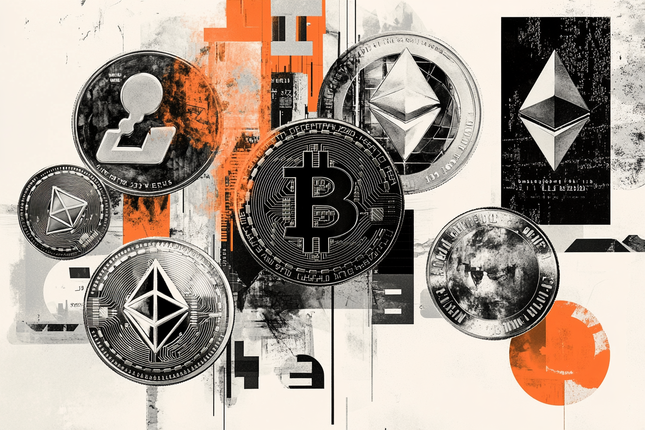High-beta currencies have rallied overnight, perhaps indicating that the US will opt for a flat rate over country-specific tariffs, which could be seen as slightly more lenient. But it’s also been reported that a customised tariff approach remains on the cards, and we mostly see upside risks for the dollar today, especially against commodity currencies.
USD: Tariff announcement at 10PM CET
The market reaction to today’s “liberation day” will depend on the size of tariffs, geographical/sectorial distribution, and openness to negotiation. The announcement is due at 4PM ET/10PM CET.
Media reports have suggested that Trump is planning a 20% tariff on most US imports, roughly equating to $660bn in expected revenues when taking the 3.3tr as a reference value for US imports. But it’s also been reported that a tiered system with different rates or a customised approach is being considered. Expectations are also that some sensitive sectors can be excluded to minimise the impact on US producers and consumers. There is an open question of whether new tariffs will be added to existing ones on autos and metals or if only the highest tariff rate will be in place.
The second layer of FX impact will depend on the geographical distribution of tariffs. Markets may be taking the 20% flat rate as a baseline, which can generate a stronger dollar reaction across the board, but the details of country-specific and product-specific duties should determine how single currencies will behave in the crosses. We still think European currencies are facing greater downside risks in this sense.
Finally, the US administration’s tone on negotiation room will be a key factor for market reaction. Treasury Secretary Scott Bessent has reportedly told lawmakers that this is the highest tariffs will go, and then there will be room for negotiations to scale them back. There may be a tendency to treat this round of tariffs using the US-Canada-Mexico tariff saga as a benchmark, but we are less optimistic in this sense. Canada and Mexico were targeted primarily on the back of a border/drug trafficking basis; this round of tariffs is led by the Treasury and Department of Commerce, in theory based on an investigation of trading practices and crucially aimed at raising revenue to fund the tax cut rollover. This appears to be a significantly more structural, longer-lasting measure by the US.
We have seen some sharp outperformance of AUD, NZD, NOK and CAD overnight as a flat tariff as opposed to case-specific reciprocal tariffs is seen as slightly more lenient and crucially less unpredictable. Our view remains that downside risks dominate for all currencies against the dollar today. The US may try to announce the harsher measures today before eventually scaling it back, which may still force a positioning rotation into USD and JPY with high beta currencies taking the bigger hit.
But dollar outperformance today will not be indicative of more sustainable strengthening. Time will be needed to assess how long tariffs will remain in place: alongside US data releases (watch ADP payrolls today), that will determine the USD outlook. We still favour USD appreciation beyond today’s event, but it will hardly be a smooth ride.
EUR: Room to price in more tariff risk
EUR/USD has softened a bit into today’s tariff event, but price action suggests strong buying interest below 1.080, in another sign that markets aren’t ready to sink their teeth on a negative, tariff-led euro narrative.
The case we have been making is that the euro should embed more tariff downside risks. Our models suggest that at 1.080 there is no risk premium on EUR/USD. Should a 20% carpet tariff materialise, the argument for a EUR/USD decline will become more compelling, but perhaps we need to see even tougher targeting of EU products or countries to dent the euro’s relatively safe status against other high beta currencies.
Outside of today’s reaction, which may well be EUR negative, things will be more nuanced. The ECB may surprise on the hawkish side with a hold in two weeks' time, and the continuous rotation from US to European assets could also continue to fuel EUR demand. We still like a decline in EUR/USD and have 1.070 as a target, but we doubt that would be a straight line even if the US surprises with a more aggressive tariff announcement.
GBP: Testing the relative safe-haven status
The UK’s goods exports to the US are worth just below 2% of GDP compared to 3% for the eurozone. It is no massive difference, but the EU has been much more in the focus of Trump’s confrontational foreign approach.
In particular, Trump explicitly opened to a trade deal with the UK in previous months, putting British exports at the front of potential exemptions should negotiations follow today’s announcement. The more markets will see room for the initial tariff announcement being watered down via negotiations, the more sterling can outperform the euro.
We mostly see downside risks for EUR/GBP in the near term, with a move below 0.830 very much possible. In the longer run, there will be room for a rebound as the Bank of England rate expectations can be repriced lower.
PLN: Rate cut motion as a downside risk for the zloty
The only event in the CEE region today is the meeting of the National Bank of Poland, which is likely to leave rates unchanged again at 5.75%. The central bank released its new forecast at the March meeting, so no action here and the statement probably doesn't have much potential to surprise either. However, after surprisingly low inflation numbers in recent months, the latest released this Monday, we do see some likelihood that someone from the dovish camp could suggest a rate cut. It's hard to find a majority for that proposal at this point, but even the motion itself would be a turning point for markets. As always, tomorrow will be followed by the Governor's press conference, which is likely to continue the hawkish tone we saw in March.
The market has moved into full dovish mode over the past few weeks and yesterday we saw another drop across the rates and bonds curve. The market at this point is pricing in roughly 115bp of rate cuts this year and a terminal rate somewhere near 4%. This is a bit more than we expect in our forecast, but it is still a possible scenario. At the same time, if we see a motion for a rate cut, the market will likely start pricing more rate cuts. Therefore, we see the balance of risks on the dovish side despite the press conference being hawkish in tone. This is building the risk of further weakness for PLN and we still see EUR/PLN above 4.200 as we discussed here yesterday. However, as across CEE, the focus will be on the US tariff story today, which is likely to dominate unless we see some surprises in Poland.
Read the original analysis: FX daily: What to expect on ‘liberation day’
Content disclaimer: This publication has been prepared by ING solely for information purposes irrespective of a particular user's means, financial situation or investment objectives. The information does not constitute investment recommendation, and nor is it investment, legal or tax advice or an offer or solicitation to purchase or sell any financial instrument. Read more here: https://think.ing.com/content-disclaimer/
Recommended Content
Editors’ Picks

EUR/USD attracts some buyers above 1.1050, FOMC Minutes in focus
The EUR/USD pair rises to near 1.1065 during the early European session on Wednesday. The US Dollar weakens against the Euro after US President Donald Trump's tariff policy takes effect. Later on Wednesday, traders will take more cues from the release of the FOMC Minutes.

GBP/USD appreciates to near 1.2850 due to easing trade tensions after Trump's comments
The GBP/USD pair advances for a second straight session, trading near 1.2820 during Asian hours on Wednesday. The pair’s uptick is supported by easing trade tensions after Trump signaled openness to negotiations with global partners, fueling hopes of a potential de-escalation in trade conflicts.

Gold: Third time a charm for buyers?
Gold price is looking to finally end its corrective downside early Wednesday, finding demand once again near the $2,970 region. A sustained upside in Gold price hinges on the market reaction to the reciprocal tariffs and the Minutes of the US Federal Reserve March policy meeting.

Bitcoin, Ethereum and Ripple target $73,000 BTC, $1,300 ETH, and $1.30 XRP
Bitcoin price hovers around $76,200 on Wednesday after falling 3.59% the previous day. Ethereum and Ripple followed BTC’s footsteps and continued their downward trend.

The Fed is looking at a hefty price level
We are still in thrall to tariffs, the faux-macro “data” driving markets. The WSJ editorial board advised other countries to take their tariffs to zero so that Trump’s “reciprocal” tariffs will have to be zero, too. Cute, but no cigar.

The Best brokers to trade EUR/USD
SPONSORED Discover the top brokers for trading EUR/USD in 2025. Our list features brokers with competitive spreads, fast execution, and powerful platforms. Whether you're a beginner or an expert, find the right partner to navigate the dynamic Forex market.